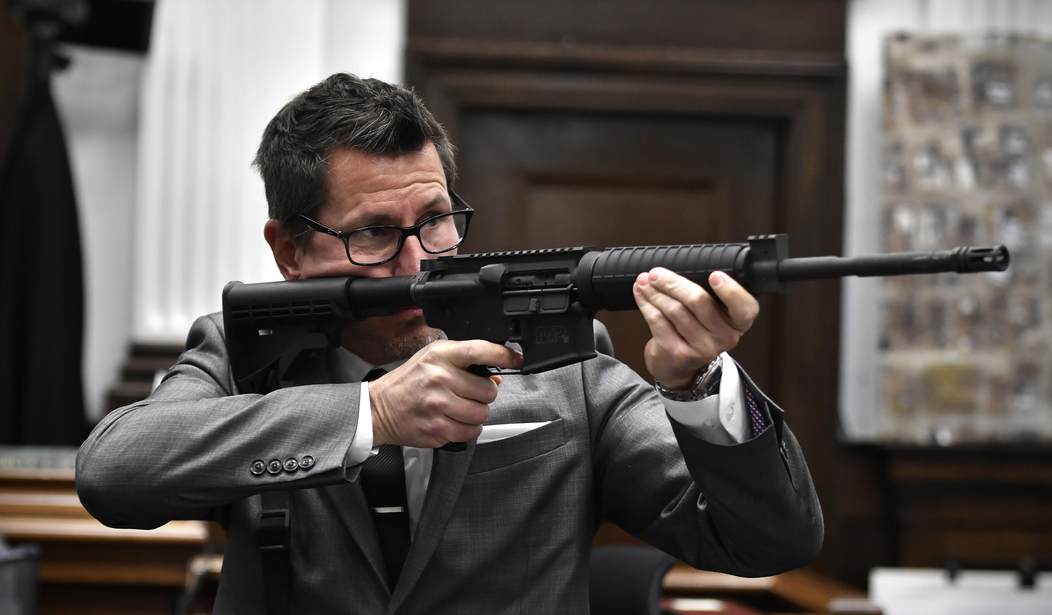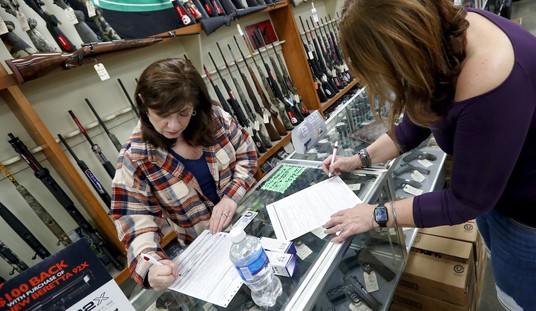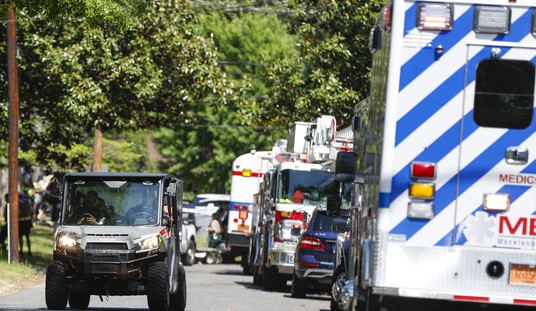We’ve known since before jury selection ever began that self-defense was going to be at the heart of the Kyle Rittenhouse case. Was the then-17-year old lawfully protecting his life when he shot three men in Kenosha, Wisconsin on August 25th, 2020, or was he a “vigilante” out looking for trouble? But as Monday’s closing argument made clear, Assistant District Attorney Thomas Binger and prosecutor James Kraus weren’t just trying to portray Rittenhouse as the initial aggressor in the chain of events that led to his shooting Joseph Rosenbaum, Anthony Huber, and Gaige Grosskreutz during violent and chaotic protests, looting, and riots in Kenosha. No, the state was also trying to redefine the laws surrounding self-defense in order to sway the jury to their side.
Binger: "You lose the right to self-defense when you're the one who brought the gun. When you're the one creating the danger." pic.twitter.com/C1nhsx1CK6
— Julio Rosas (@Julio_Rosas11) November 15, 2021
When I first heard Binger make that statement, I thought it was just a verbal flub. There’s no way a prosecutor with as much experience as Binger truly believes that lawfully carrying a firearm negates your right of self-defense if your attacker is unarmed.
But this wasn’t some gaffe on Binger’s part. It was a deliberate strategy by the Kenosha County prosecutors, because Binger’s colleague James Kraus made a similar claim during his rebuttal to the defense’s closing arguments.
Upon a return from the break, Assistant District Attorney James Kraus presented the state’s rebuttal.
“You don’t just immediately get to shoot someone,” Kraus said. “It is not reasonable for any adult … 17-year-old male, to not try to defend yourself first using other methods.”
According to Kraus, Kyle Rittenhouse had all kinds of non-lethal ways of protecting himself against Joseph Rosenbaum. He could have punched him, kicked him, even smashed his face with the butt of his rifle. But Kraus says that Rittenhouse did not have the right to shoot Rosenbaum as he lunged at the teen. In fact, Kraus told jurors that Rittenhouse did not meet his “duty to retreat” before shooting Rosenbaum, even though Rittenhouse was a) running away from the man before he turned and fired as Rosenbaum lunged towards him and b) there is no duty to retreat in Wisconsin self-defense statutes (though jurors can consider whether or not someone did try to escape an attack when weighing self-defense).
Over at the blog Legal Insurrection, attorney Andrew Branca of the Law of Self-Defense says defense attorney Mark Richards could have done a better job of pushing back on the prosecution’s distortions of self-defense law.
For each count, I would have made clear in plain language exactly what circumstances would lead Kyle to believe he was facing an unlawful forcible attack (Innocence), that the harm feared from that attack was either already being inflicted or apparently immediately about to occur (Imminence), how the nature of the threat presented an apparent risk of death or serious bodily injury (Proportionality), and how all of this was not just genuinely believed but objective reasonable (Reasonableness).
We have seen how throughout the trial ADA Binger has been making much of the argument that some of the people attacking Kyle were “unarmed.” Indeed, at one of the pre-trial hearings, Binger had actually argued that it could never be lawful for an armed man to shoot an attacker who was unarmed.
So the defense ought to have had every expectation that much would be made in closing about the “unarmed” nature of Rosenbaum’s attack on Rittenhouse, and it should have been made crystal clear to the jury how deceptive this framing was.
In particular, Rosenbaum was not merely fake-rushing Kyle, or poking Kyle with an index finger, or even shoving Kyle forcibly backward—Rosenbaum was fighting Kyle for control of his rifle, and in the context of the death threats Ryan Balch and Kyle himself had testified about.
The moment Rosenbaum is fighting for the control of the rifle, he is no longer “unarmed” in any meaningful sense of the term. Instead, he’s in the process of arming himself. With a rifle. With Kyle’s rifle.
If Rosenbaum were picking up a dropped rifle from the ground under those circumstances nobody would doubt that he was arming himself for the purpose of using that rifle on Kyle.
By not merely picking up some other rifle, but fighting Kyle for his own rifle, Rosenbaum is actually creating a greater threat than that, because he’s simultaneously disarming Kyle while he’s arming himself.
No such argument was made by Richards during his close. And I expect I know why—because he approached this closing argument from his own perspective, as someone to whom this argument is obvious and intuitive, rather than from the perspective of jurors who had developed some sympathy for these “victims” and their families, and for whom this notion of “arming oneself with the other guy’s gun” might not be so obvious and intuitive.
By addressing this issue only vaguely or not at all, Richards left a gaping opening for Kraus to wobble through in his own State rebuttal argument, where he went on at length about Rosenbaum’s status as “unarmed.” Kyle brought a gun to a bar fight, he could have punched Rosenbaum, or kicked him the testicles, or struck him with the rifle as an impact weapon—anything other than fire four rounds into him for the purported offense of merely chasing him.
Has the prosecution muddied the waters of self-defense enough that jurors may actually believe that armed citizens lose their right of self-defense, that legal gun owners can never use their firearm in self-defense against unarmed individuals, and that Rittenhouse was only justified in kicking or punching Rosenbaum as the man reached for his rifle? We’ll know soon enough how effective Binger and Kraus were on Monday. The jury will be seated at 10 a.m. Eastern time this morning, and they’ll begin their deliberations soon after.









Join the conversation as a VIP Member